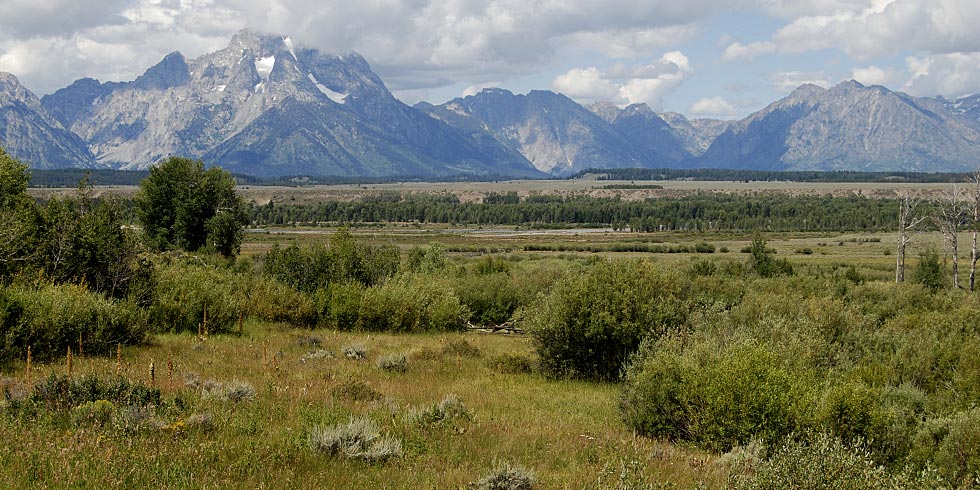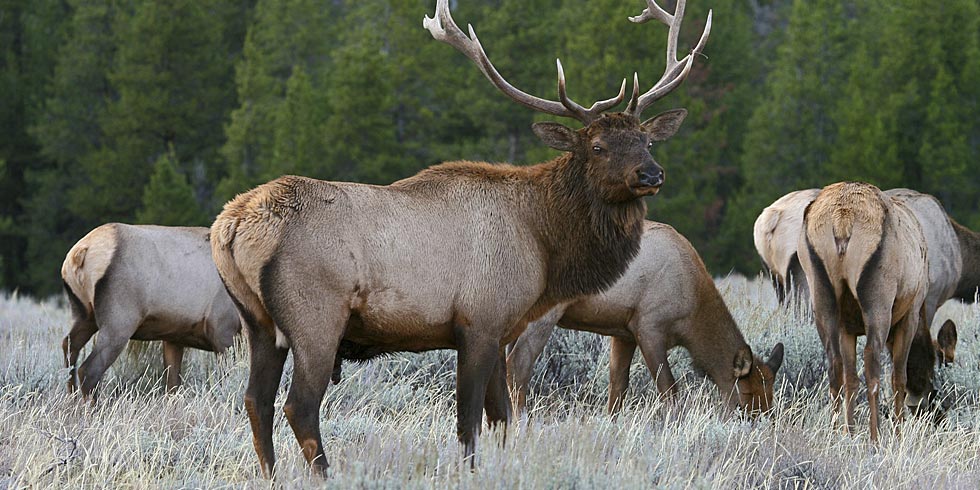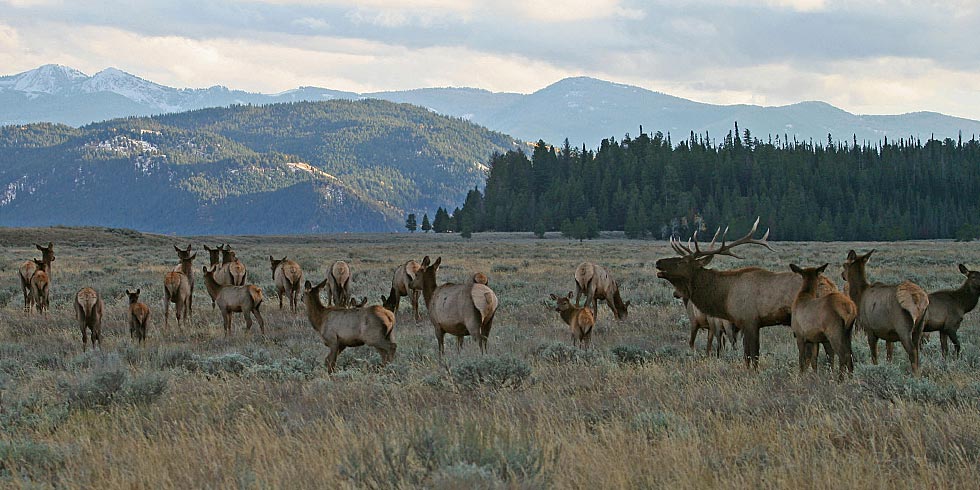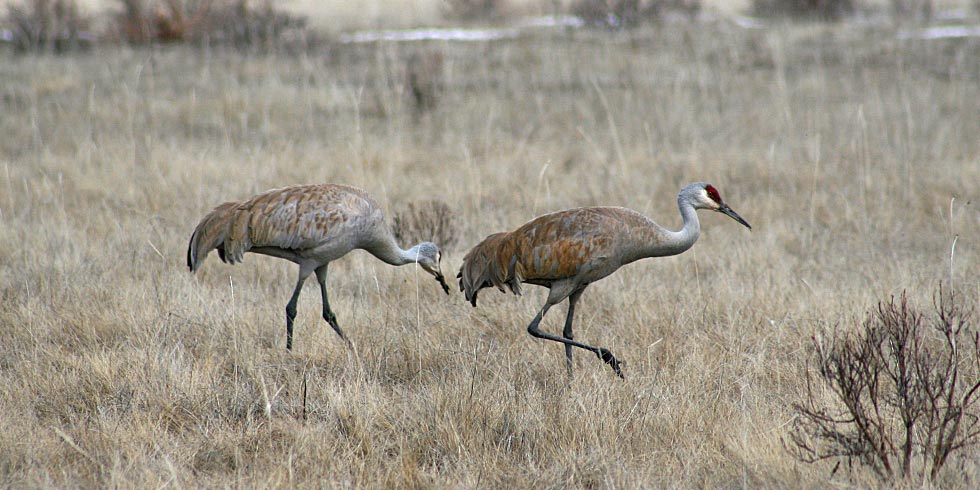Meadow Community
Overview
Meadow communities are alluring to both wildlife and humans and also play an important role in the ecosystem. Flowering plants and grasses are the foundation of this community, providing food and shelter to many different kinds of wildlife and providing great opportunities to view wildlife in the park. Look for meadows interspersed throughout sagebrush, forest, wetland and alpine communities.
Meadow Community
Plants
Over 1,000 species of vascular plants grow in Grand Teton National Park and the surrounding area. Soil conditions, availability of moisture, slope, aspect, and elevation all determine where plants grow. Plants that require similar conditions are often found growing in the same area. Animals depend on plants within a community for food and shelter. The plants in an area often determine the animals that occur in that area. These associations form various wild communities.
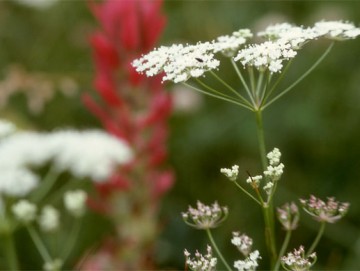 |
Yampah
Perideridia gairdneriUntil yampah blooms, it blends with meadow grasses with its single stem and long and slender leaves. The starchy roots were an important food for American Indians in Jackson Hole who ate them raw or roasted.
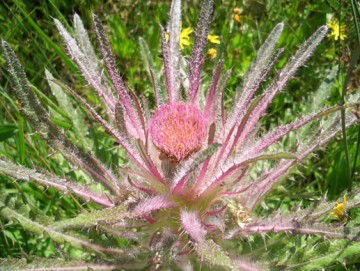 |
Elk Thistle
Cirsium eatoniiElk thistle is a thistle native to Jackson Hole. As its name implies, elk feed on this plant. It is also called Evert’s thistle after an early Yellowstone expedition member who became lost and ate this plant.
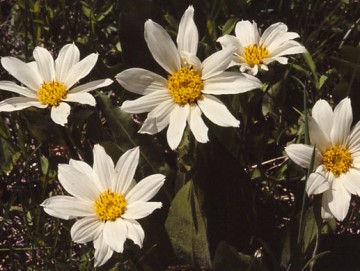 |
White Mulesears
Wyethia helianthoidesThere are two species of mulesears or Wyethia in the park, white and yellow. Both species grow in meadows and have sunflower-like flowers, but white wyethia tends to favor wetter meadows.
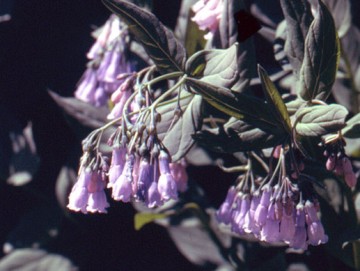 |
Mountain Bluebell
Mertensia ciliateThe mountain bluebell often casts a blue-green shadow meandering along streams through the subalpine and alpine meadows of the Teton Range. Up close, each flower resembles a tiny hanging blue bell.
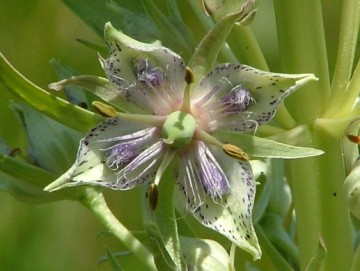 |
Green Gentian
Frasera speciosaGreen gentian, or monument plant, is often the tallest plant in the meadows and forest openings. Growing up to five feet tall, the scatted plants are reminiscent of tall headstones in a rather unkempt cemetery.
Meadow Community
Mammals
With varied elevations and a variety of wild communities Grand Teton National Park is home to over 60 species of mammals. Large ungulates like moose, elk, mule deer, bison, and pronghorn are commonly seen along park roads. Although less common, large predatory mammals such as grizzly bears, black bears and coyotes are also regularly seen, while wolves and mountain lions are more elusive. Smaller mammals are abundant in the park, and species such as Uinta and golden-mantled ground squirrels, least chipmunks, red squirrels and pikas are commonly seen. Look for muskrats, beavers, or river otters in wetland communities. Bats frequently cruise above waterways for insects. Every wild community has its own assemblage of mammalian species.
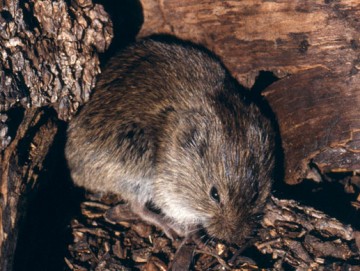 |
Meadow Vole
Microtus pennsylvanicusThe meadow vole is common in grassy meadows. This seldom seen animal spends its time in underground burrows or in runways constructed by cropping grass. Voles are food for predators such as weasels and owls.
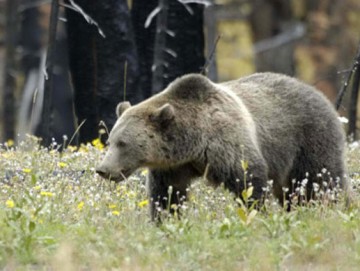 |
Grizzly Bear
Ursus arctosThe grizzly bear has become more common throughout the park in the last twenty years due to protection under the Endangered Species Act and park management. This bear needs open spaces to roam freely. (Photo credit: USFWS)
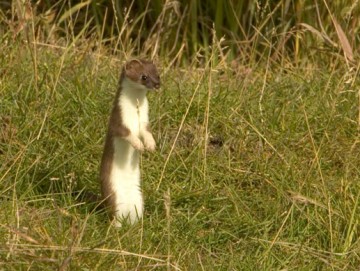 |
Short-tailed Weasel
Mustela ermineaThe short-tailed weasel, or ermine, is the smallest predator in the park. Its summer coat is light reddish brown, with a cream-colored belly, and black tipped tail. Its winter coat turns white except the tail. (Photo credit: USFWS)
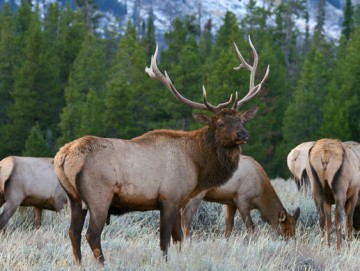 |
Elk
Cervus elaphusElk, or wapiti, are the most common ungulates in the park. Males gather harems of females in the fall, parading their antlers as a sign of dominance. The antlers are shed early each spring. (Photo credit: Dan Ng)
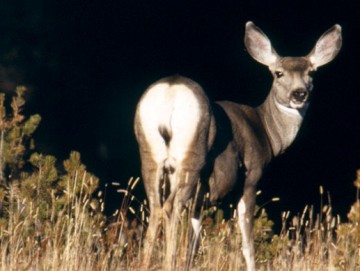 |
Mule Deer
Odocoileus hemionusBoth mule deer and white-tailed deer live in the park, but white-tailed deer are relatively rare. Mule deer live here in the summer, and migrate to the buttes south of the park in fall where there is less snow.
Meadow Community
Birds
Birds in Grand Teton National Park are varied and abundant with over 300 species having been observed in the park. Birds are most abundant during the spring and fall migration, although over 60 species regularly breed in the park. For the avid bird watcher the park can be a good place to observe a number of Rocky Mountain and Western species including the trumpeter swan, cinnamon teal, Barrow’s goldeneye, Swainson’s hawk, greater sage grouse, dusky (blue) grouse, great gray owl, broad-tailed and calliope hummingbirds, violet-green swallow, Steller’s jay, black-billed magpie, Clark’s nutcracker, mountain chickadee, dipper, mountain bluebird, yellow-headed blackbird, western tanager and rosy finch. Other commonly seen birds in the park include common merganser, bald eagle, osprey, sandhill crane, common raven, yellow and yellow-rumped warbler.
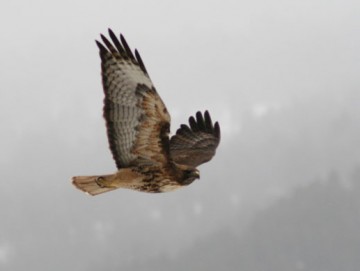 |
Red-tailed Hawk
Buteo jamaicensisRed-tailed hawks hunt small rodents by soaring or by sitting on a perch. Like other raptors, they have excellent eye sight and once they spot prey, they will swoop upon the animal killing it with their talons.
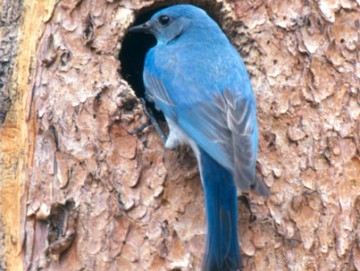 |
Mountain bluebird
Sialia currucoidesThe mountain bluebird is said to carry the sky on its back. Male mountain bluebirds are bright sky blue while females are paler. This species nests in old woodpecker nests near the edges of meadows.
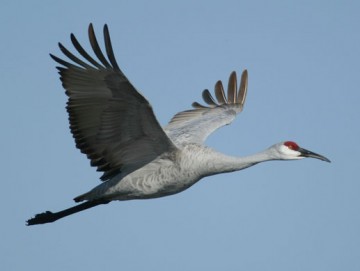 |
Sandhill Crane
Grus canadensisSandhill cranes return in spring. These large birds, up to five feet tall, are gray with a red cap. They have the habit of preening iron-rich mud onto their gray feathers staining them red with rust. (Photo credit: USFWS)
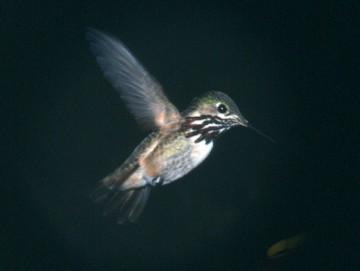 |
Calliope Hummingbird
Stellula calliopeThe calliope hummingbird is the smallest bird in the park. The back and wings are a metallic emerald green. The chin of males have rows of ruby red feathers that are erected when displaying to females.
Meadow Community
Invertebrates
Insects and other invertebrates are some of the most abundant and most important animal groups in the park. There are over 10,000 species of invertebrates in the park. These animals play important roles in wild communities - insects function as pollinators of the park’s abundant wildflowers, while insects and other invertebrates, are food for mammals and birds from the largest grizzly bear to the smallest warbler. Invertebrates act as critical decomposers and nutrient-recyclers and cause important plant diseases.
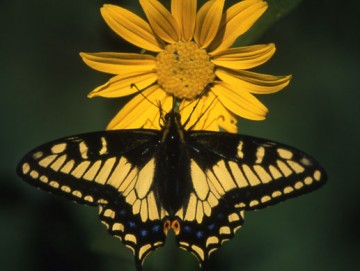 |
Anis swallowtail
Papilio zelicaonThe anis swallowtail is a large yellow butterfly with black markings and short tails on its wings. Adults feed on flower nectar. The lime green caterpillars feed on plants in the carrot family.
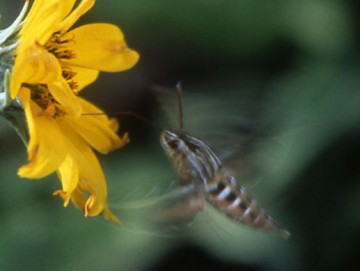 |
White-lined sphinx
Hyles lineatePeople confuse the white-lined sphinx moth for a hummingbird. This moth is active at dusk and dawn, hovering to feed on nectar. The large body and whirring wings suggest the nickname hummingbird moth.
Discover Grand Teton is funded by the Grand Teton National Park Foundation in partnership with the National Park Service.
gtnpf.org
gtnpf.org
